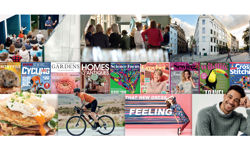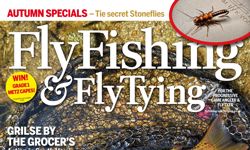When the woman&home team took to the stage to collect two of the prestigious 2014 PPA awards – Consumer Magazine and Brand of the Year – it was a defining moment for a magazine first launched in the UK in 1927. But, clear to everyone involved, the moment of glory wasn’t about one year of publishing, it was the culmination of key insights the team undertook almost a decade before.
At that time, a hard look at data, women and society and changing forces laid out a business opportunity. If editorial content could be shaped to take readers along with these changes, then readership and engagement would build – that was the theory. Of course, no one could predict the scale and size of digital change, so in the intervening years, many additional layers of challenge have had to be added on to take account of readers’ use of digital, the reshaping of retail and, in the last five years, the recession’s impact on behavior. Consumers are more busy and distracted than ever.
However, one common thread runs throughout – an unequivocal focus on 40+ ABC1 women and their new attitude to life – and putting the reader centre stage.
Multidimensional brands and knowing your consumer
Today, media brands have a faster acceleration curve in which to develop and capitalise, or wither, within the markets they serve. Trial, opinion and consumer engagement are undoubtedly louder, sharper and more uncompromising. In recent times, in the women’s magazine market, we have seen brands close and had advertisers scratching their heads why something they had supported and invested in, is suddenly no longer on the newsstand. What did they do wrong?
Every brand featured in the shortlists at the PPA Awards evening had something in common. All had moved into new business avenues; something that, even looking back just a few years, would not have been the case. Success today comes from having a multidimensional positioning, and recognising that a myriad of customers might be seeing your brand from many different angles, and picking and mixing what they might get involved with.
The key is making absolutely sure you know what the reader is up to. The skills of tuning in, running a pragmatic business assessment, and keeping focused on readers have never been more critical. Scale is also important for woman&home, drawing in large numbers to maximise commercial success, so we have had to focus on applying what works across the whole UK.
Creating a business opportunity: GenerationYNot!
So, standing back, a decade ago, the key insights spelled out that there was a demographic wave going through the population – 1 million more 38-55 year old women, reaching new stages in their lives. Trend experts were writing busily about baby boomers, and they were beginning to observe and talk about a group called Generation X. Within both clusters were a substantial number of women who had grown up enjoying print magazines – Jackie as teenagers, Cosmo in their twenties, enthusiasts of new launches such as Marie Claire and in the new celebrity age, Hello! and OK!.
We wanted to attract people who loved new things, were modern in outlook, and enthusiasts. They loved their homes, but they were also living different lives than women before. Two other important factors – more were remaining single, or were having children later or not at all (one in five) – more had been educated, having more income, and had grown up with fashion, beauty, music, liberalism, internationalism – a potent mix of change, opportunity and reorientation. They wanted something that reflected this, and them.
Sue James, editorial director of woman&home called this, “a brand new attitude” and described the woman being targeted as a “responsible rebel” who wouldn’t be pigeonholed by family assumptions, etc. Sue James set about creating a magazine that would reflect and appeal, up-weighting premium beauty, ensuring luxurious visuals but practical and warm in tone. Features that made identification with ‘me, my dilemma’ – ‘Mid-life Without a Map’, ‘New Directions’, for instance.
“I was just thinking about that”, was the reader response we liked to hear to fuel the next idea. Warm, editor-led, inclusive – not a to-do guilt list or making it feel like a club you couldn’t join, or too narrow and London-centric. This approach has been underpinned by research of the listening kind. Taking a temperature test with people who are opinion-formers and testing out theories to see how they play across the country.
Advertising support against this vision has been positive in some key categories, and patchy in others that should know better! We have learned that if a business is allergic to anyone over 40, then they don’t want to engage or see the potential, and no amount of persuasion will change the vision. Short-sighted, when you think they are not focusing on the Angelinas or the Kylies or the Mirandas of our age, imagining that the over 40 cohort is represented by post-war Mildred, or Peggy or Doreen.
In the beauty category, much more focus has been applied to demographic shifts. Much investment has flown into targeting 40+ women, and some businesses have had outstanding commercial results from their ability to harness this; we have seen sizable investment in advertising in this category – with new products, some luxurious, and using all of the skills as they do to market to under-40s in clever, fresh multi-platform routes.
At Time Inc (UK), we continue to present evidence surrounding this audience, whether it’s shopping, attitude or insights, to challenge misconceptions under our banner of #generationYnot.
Multi-platform content and publishing
Now for the stats, and do digest these because they reflect the complexity of where to create content today – woman&home today sells approximately 344,922 copies, with 130,270 of these as monthly subscribers. Within this mix, they might be buying a standard size issue, a compact, a multi-pack, a digital version or retail-specific version with bonuses. They may be an occasional buyer being enticed by retail win-back vouchers, or they may be a regular subscriber being offered a chance to attend a reward event. In any month, 150 pages of original content are being created, with a further five or more multi-level sponsored projects involving all of the above and more.
They may be a buyer of one of the five spin-off titles published with quarterly, tri-annual or bi-annual frequency – woman&home Feel Good Food, Feel Good You, Fashion, Eating Smart or Dinner Tonight. They could be someone who reads the daily w&h newsletter, or the bi-weekly Indulgence newsletter, or be one of the 622,000 people visiting the website (20% of which might be looking via their smartphone, or 35% via their tablet as well as desktop, which might be more likely during the week versus the weekend), or one of the 43,000 interacting on the womanandhome.com forum (1 million posts and rising) or one of the 15,900 people following woman&home on Twitter, or one of the 672,000 people following our daily Facebook feed and interaction… or on our Instagram feed, or on the 50+ pinned boards on Pinterest. They may be one of our “ultimate consumers” – one of 5,000 joining together to meet at our annual events – for charity, with authors, at Supper Clubs or many other opportunities. People who are real, we meet and acknowledge by name, we learn from, who share with us a host of interesting and observing attitudes and beliefs to enhance our brand and develop it further.
Nothing is done in one dimension at a monthly pace anymore. What did we do with all our time when we did?
Digital
Rebuilding our website was a fantastic ground-up, hands-on exercise in really getting under the skin of data and how people interact, studying search and looking at trends. Powerful insight from which to publish, test, listen and build. There is never an end to the digital process – you just have to get stuck in, learn, create and react. We got our heads around daily pace and this has become second nature – either in our 24/7 always-on web environment, or our daily targeting newsletters. In food particularly, marrying search together with content has been enlightening, and whereas we used to guess when people would begin thinking about ideas, or looking for influences, we can now see these straight away or, even better, anticipate. In social media, we see great opportunities to extend brand reach – and for different moments of the day or week – with the art of words (Twitter), with the art of pictures (Pinterest, Instagram) or a mix of both (Facebook, newsletters). We have had to work out our voice, our team and have everyone understand the w&h brand and tone.
In the last five years, we’ve had a determination to work out how to weave digital and print seamlessly together. Since our stance has always been “consumer first”, we have had to work our way through a myriad of digital innovations, sorting wheat from chaff. Iteration is today’s buzzword, but an iterative approach has been the only way all of us publishers have tried to steer through a forest as dense and untrodden as anything we have ever known! The “instant expert” – because all of what we are dealing with is brand new – could be telling us “jackpot” but it could equally turn out to be a “damp squib”… one has to try to sift through and identify where to look and listen, and when to admit defeat and tune out.
What of the future?
Coming fresh from the AOP 2014 conference, the future was laid out by digital leaders. They were preoccupied with mobile, video and data, along with programmatic and the demands of native content. But, from our experience with woman&home, you can’t go far wrong if you just pay attention to what the demographics and macro trends are telling you. People continue to want storytelling, and always will, and iterating and testing journalistic reaction has been the way it’s always been and will continue to be – but in vastly different new imaginative forms. You just have to learn, keep up with new routes to readers, keep focused, attach business needs – and do it faster than the next guy (or girl in our case).












